Cichlazoma meek: description, care, reproduction and compatibility
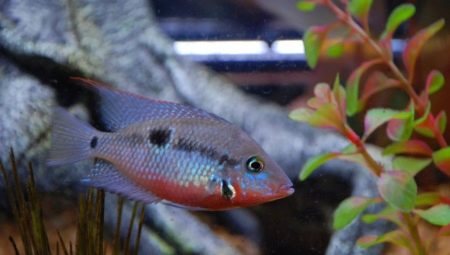
Tsichlazoma meeka is an aquarium fish with a red "tie". Homeland - fresh water bodies of Guatemala and southern Mexico. The fish is unpretentious and lives well in captivity. Its maintenance will not be difficult for novice aquarists. This cichlid differs from its congeners not only in color, but also in a more peaceful character.

Description
The meek cichlazoma has a spectacular appearance. The body is elongated and flattened, the muzzle is pointed. The color is steel with a silvery sheen, black spots are located in the center of the body, which can merge into an expressive stripe. The belly and gills are scarlet, so the fish is also called "red-throated".
If the meek's cichlazoma feels danger, it tries to scare the enemy by spreading its gills to the sides.
The fish has beautiful pearl-turquoise fins, shaped like a lyre.

These fish are one of the smallest cichlid species. In their natural habitat, they reach a length of 17 cm, and in an aquarium - 12 cm. They live in captivity for quite a long time - 10–12 years.
Meek cichlazomas are generally friendly, but adult males can show aggression towards both congeners and other fish species, especially during the spawning period. They occupy a certain area of the aquarium and do not allow anyone into their territory.
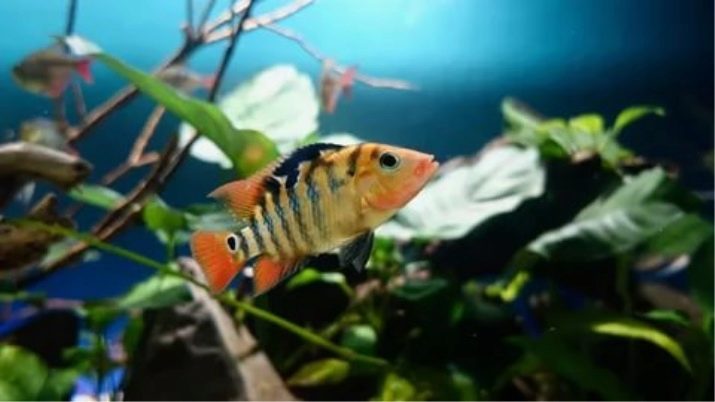
Compatibility
In order to avoid conflicts among aquarium settlers, you should seriously approach the choice of neighbors for this cichlid. Meeka can get along with the following types of fish:
- scalars;
- akarami;
- locaria catfish;
- some types of large barbs;
- large swordtails and mollies.
When creating a species aquarium, it is important to monitor the behavior of the inhabitants, and in the event of aggression, warring individuals are seated.
The breeders recommend that in order to avoid conflicts, you need to keep the fish well-fed and provide them with enough space. It is also advisable to divide the aquarium with decorative items into improvised zones.

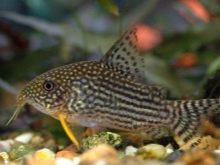

Arrangement and maintenance
For one pair of cichlaz meeks, an aquarium of 50–70 liters is required, but if the fish are planned to be kept in a flock, then the minimum volume of the tank should be about 150 liters. Otherwise, a struggle for territory cannot be avoided between males. The size of the cichlase individuals depends on the size of the aquarium: the larger the capacity, the larger the individuals will be. The aquarium should be closed with a lid, as the fish have the ability to jump out of the water.
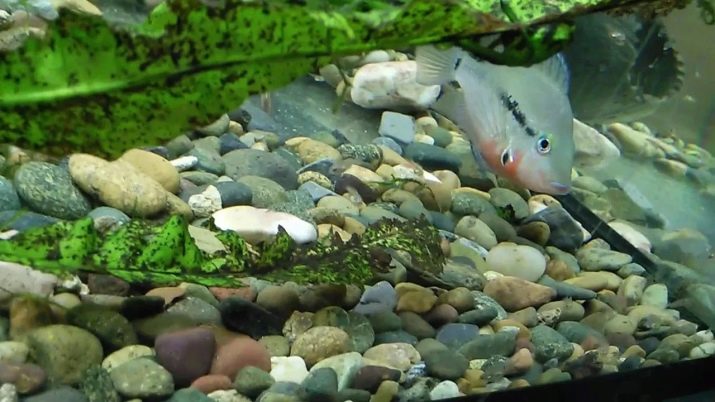
There are no special requirements for lighting. Cichlazomas like to be in the bottom area of the aquarium and therefore do not need bright light. Installation of lamps is only necessary if the tank is in a dark place. But it is worth considering that the aquarium with them looks beautiful under fluorescent lamps, and additional light will not interfere with the fish.
Cichlazomas love clean, oxygen-enriched water, so the aquarium must be equipped with filtration and aeration systems.
These devices must be constantly switched on. The following requirements are imposed on water:
- temperature - 23–26 ° C;
- acidity - 6.5–7.5 Ph;
- hardness - 17–20 dH.
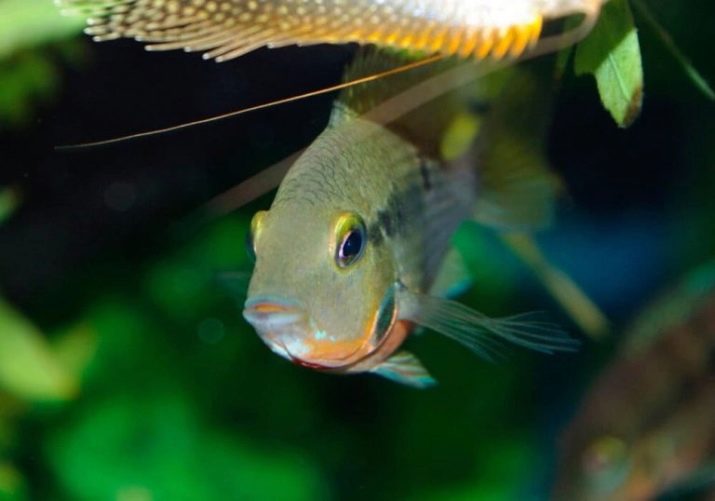
The bottom of the aquarium is covered with a thick layer of smooth pebbles or coarse sand (8-10 cm). The reservoir is decorated with various grottoes, snags, large stones. You can also create artificial caves and shelters. Meek cichlazomas love to dig in the ground and pull out plants, so algae are chosen with powerful roots. The following plants will suit these fish perfectly:
- vallisneria - the most unpretentious grass, looks good on the sides and in the background of the aquarium;
- anubias - a plant that can grow up to 1 meter in length;
- cryptocoryne - a beautiful lush bush;
- echinodorus - algae with light green, brown and burgundy leaves.


In the aquarium, a 25% water change is made every week. Previously draining the old one, pour settled clean water into the tank, the temperature of which corresponds to the aquarium one. This procedure is mandatory, since cichlazomas are very demanding on cleanliness. It should be noted that in a new aquarium, they are not in a hurry to change the water: they wait 1 month, during which a microclimate that is comfortable for fish should be formed.
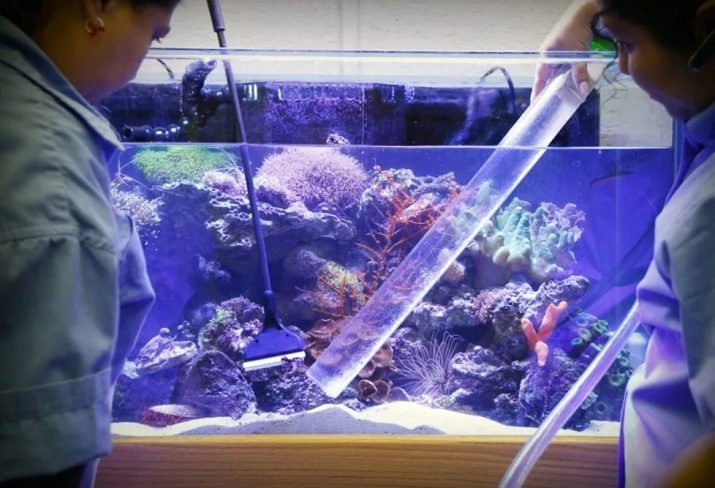
Feeding
Feeding is carried out 2 times a day. Of the varieties of dry food, it is preferable to give special flakes for cichlids - they contain vitamins and minerals necessary for fish. Cichlazoma meeka is a predator, therefore, live food must be present in its diet:
- pipe maker - a thin worm with a high fat content;
- core - mosquito larva, which the fish hunt with pleasure;
- bloodworm - the most popular nutritious food;
- daphnia magna - a crustacean with a high protein content;
- earthworm - one of the favorite delicacies of aquarium fish, but since it is high in calories, it often cannot be given.
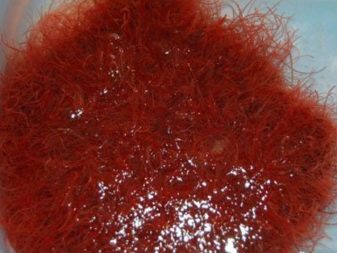
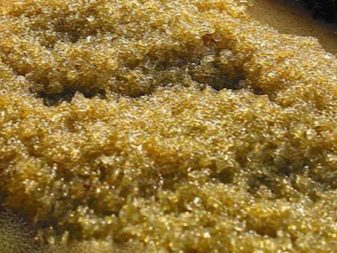
You can diversify the menu with other nutritious products: pieces of beef, fish or squid. It is imperative to give plant food, lettuce, dandelion and nettle leaves are suitable. Fish can also be offered cucumber, zucchini, carrots or cabbage leaves. Vegetables and herbs should first be scalded with boiling water so as not to introduce an infection into the aquarium.
All uneaten food particles are removed from the aquatic environment, since when they rot, substances harmful to fish are released.
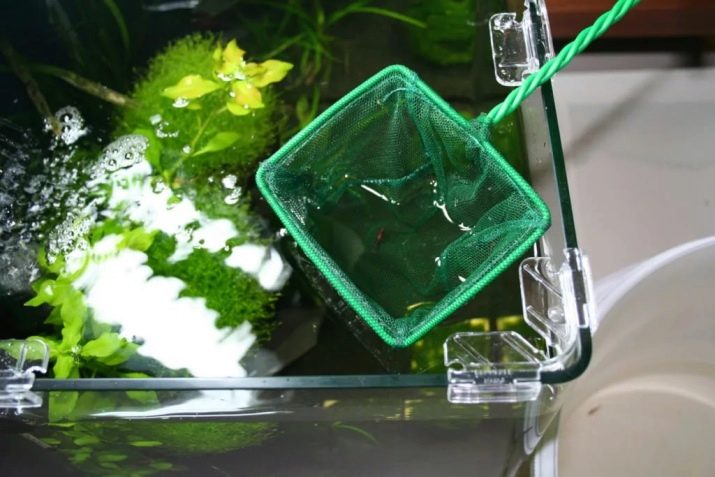
Breeding
Cichlazoma meek reaches sexual maturity by 8-10 months. Distinguishing the female from the male is easy: the male is brighter and smaller in size.In addition, the fins of the male are longer and sharper, while in the female they are rounded.
Tsichlazoma successfully spawns in a common aquarium, for which individuals independently choose a mate for themselves and acquire offspring. If this does not happen, then a separate tank is prepared for the male and female.
In order to stimulate the breeding process, equip the spawning grounds, following the following recommendations:
- it is desirable that the water temperature is higher than in the general aquarium, but within 24-26 degrees;
- the hardness of the medium is reduced by adding a little boiled water;
- constant aeration is required;
- several flat stones are placed in the tank and the plants are planted.
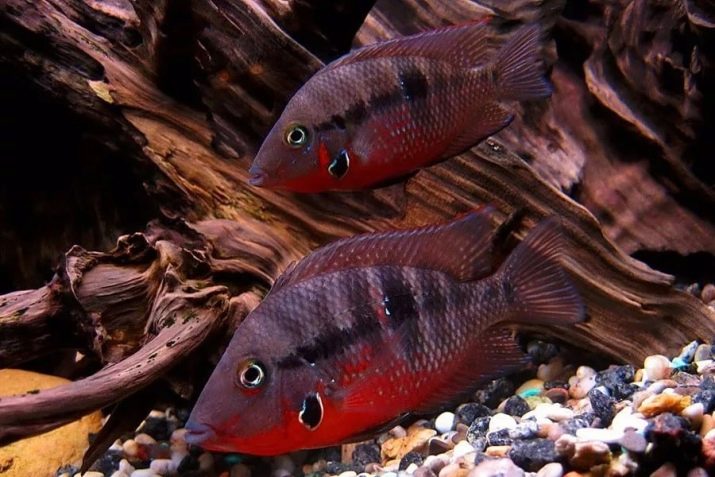
During this period, fish should be fed with high-quality live food. If the meek's cichlazomas feel comfortable, mating games begin. The female lays eggs on a flat stone, which the male has previously chosen for her. Parents take care of the caviar by fanning it with fins and clearing the area around.
Sometimes the male can behave aggressively, in which case he should be planted - cichlazes often have cases of eating offspring.
Approximately on the third day, larvae appear, which after another 3 days turn into fry. At this moment, the parents are placed in a common aquarium, and the young are fed. Kids actively swim around the aquarium in search of food. They can be fed with cyclops or brine shrimp nauplii, and artificial feed for fry is also suitable. Fish grow unevenly, so stronger individuals can offend weaker ones. To avoid this, the young are sorted based on size and large fry are deposited.
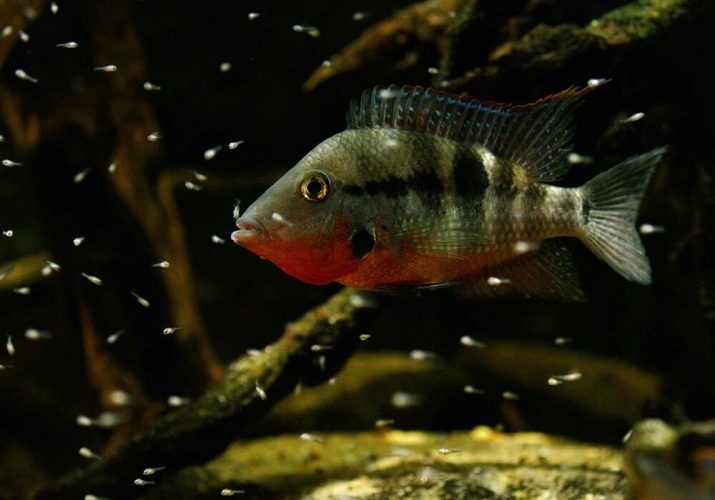
Diseases
In general, meek cichlazomas are tenacious, but poor or improper care can cause ailments such as fin rot, fungus, or parasite infestation. It is necessary to observe the fish and if suspicious spots, stripes or plaque are found on the body, quarantine sick individuals. Infections are treated with antibiotics or salt baths. The fish are immersed in the prepared solution for several hours. If the disease is not started, treatment is most often successful.
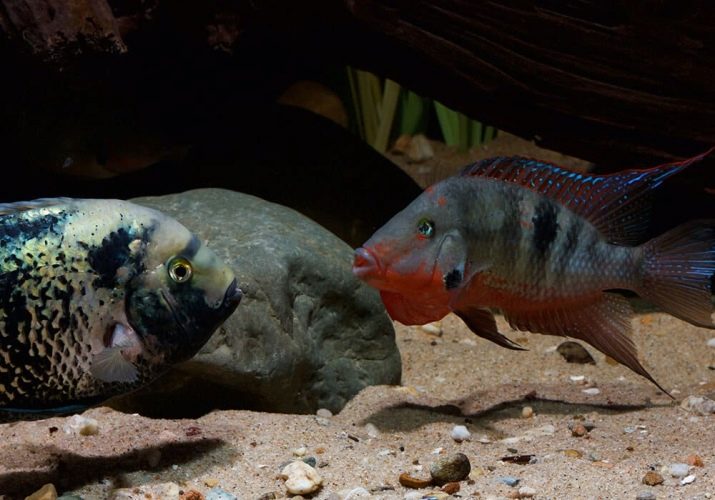
The best prevention of disease is to provide good living conditions for pets.
The fish should not be overfed, and in case of overfeeding it is necessary to arrange a fasting day - to leave the "glutton" without food for a day. It is necessary to carefully monitor the cleanliness of the aquarium, thin out the plants and monitor the water indicators. Cichlazoma meeka, living in comfortable conditions, will delight its owner with a bright iridescent color and active behavior.

In the next video, you can watch the cichlase feeding the meek.








